For a person to remain without sight is a tragedy. But there are living things that have never had organs of sight, or have ceased to rely on them in the process of evolution. Introducing you top 10 blind animalsthat do without sight.
10. Blind Dalai Mountain Lizard (Dibamus Dalaiensis)
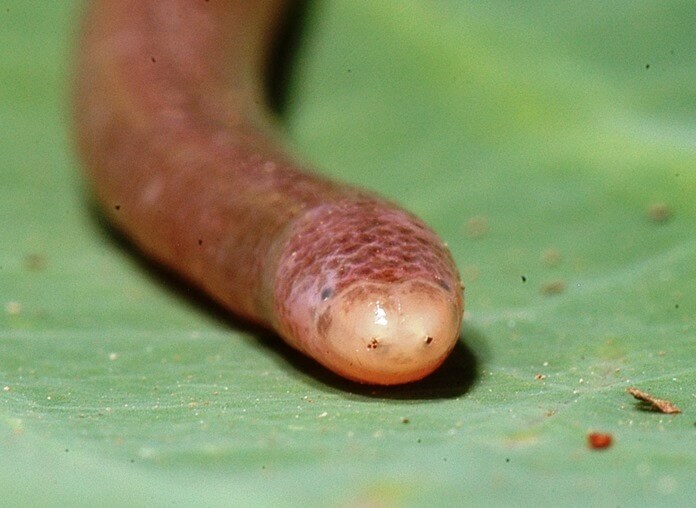
In 2011, a new species of legless worm-like lizard was discovered in Cambodia, and as the name suggests, it is completely blind.
These interesting animals have outer ears, and depending on gender, they may have small protrusions where their legs are usually located.
The blind legless lizard from Cambodia evolved to not need eyes, as it digs in the ground for almost its entire life. When it comes to the eyes, according to one researcher, "These adaptations are just a waste of energy as you wade through underground tunnels."
9. Brazilian Blind Haracide (Stygichthys Typhlops)

The caves in the Brazilian state of Minas Gerais are home to fish that do not need eyes or pigmentation. These small creatures up to 4.6 cm in size live relatively secluded in their cave ponds. They have no reaction to light, and no visible organs of vision.
The Brazilian blind charicide is confined to a 25 km long aquifer and is at risk of habitat loss due to a drop in local groundwater levels.
8. Eiselt worm (Atretochoana eiselti)
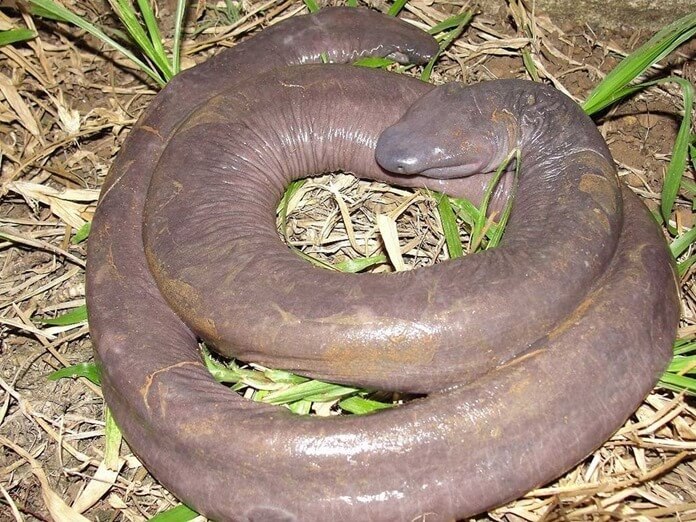
Although this eyeless creature looks like a snake (and more obscene names such as "memberaconda" come across on the Web), in fact, it is a closer relative of the aquatic lungless salamander.
The legless amphibian in the Amazon has shocked most scientists as it can live without eyes and lungs. And in his skull are muscles that are not characteristic of any living organism.
Researchers are now working to find out more about this rare find, as Eiselt's worms have barely been studied.
7.Texas blind salamander (Eurycea rathbuni)
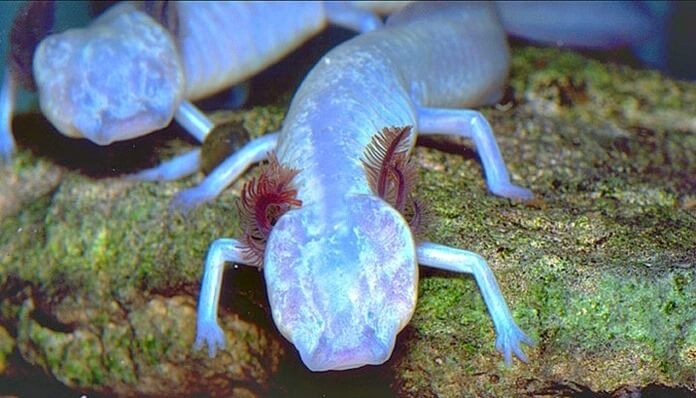
After years of life in underground waters, the Texas blind salamander decided that eyes were an unnecessary luxury, and evolved to the point that it no longer needed them, hiding under thin and colorless skin.
This animal catches its prey (snails, crabs and other invertebrates) by touch, and finds partners for reproduction by smell.
6. Kauai Cave Wolf Spider (Adelocosa Anops)
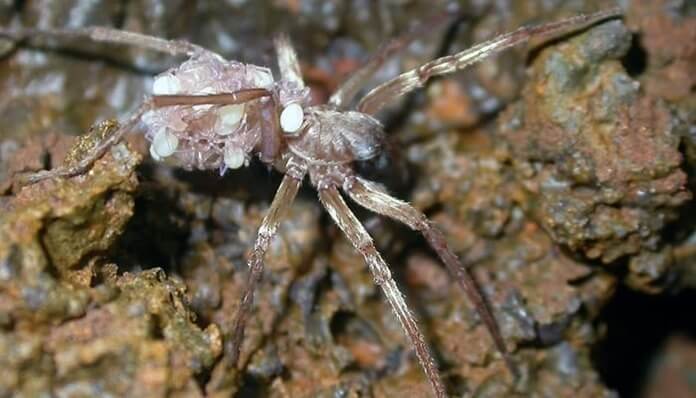
Another animal that does not have eyes is the blind wolf spider, which lives in only a few caves located on the Hawaiian island of Kauai. It is relatively small for wolf spiders and reaches a length of only 20 mm.
Despite the daunting name, cave wolf spiders are completely harmless to humans and prey almost exclusively on small amphipods found in their habitat.
5. Wide-mouthed Satan (Satan eurystomus)
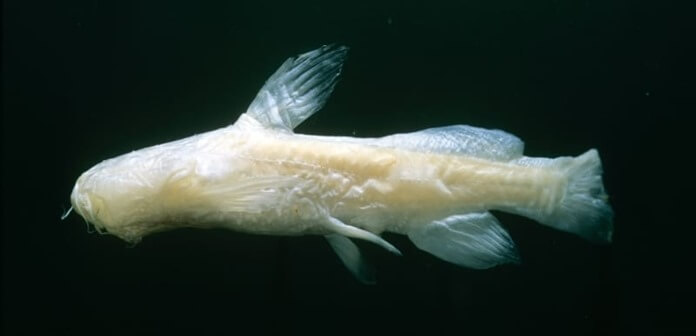
It is a rare freshwater species of catfish native to Texas and the only member of the Satan genus.It is currently only found in five artesian wells in and around San Antonio.
Satanic fish have no pigmentation and no visible eyes from the outside. However, they once had organs of vision, but probably disappeared as a result of evolution. The remnants of the eyes are incredibly reduced in size and have practically no traces of the retina or lens, and the optic tract, although present, does not reach the brain.
4. European Proteus (Proteus Anguinus)
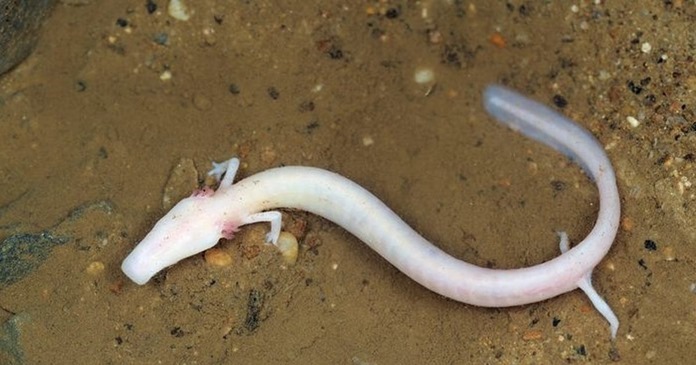
Pale pink, tailed, easily withstanding 10-degree water temperature - this is how the European Proteus appears before us, he is also a "human fish" - because of the similarity of color with the color of the human body.
Unlike some of the other species on this list, proteas have eyes, but they are completely hidden under the skin and are unable to see any light. These animals use their senses of smell and hearing to navigate in the dark.
European proteas always live in water, which is unusual for amphibians, and they can be found exclusively in cold underground lakes and streams in the west of the Balkan Peninsula, where they spend their very long life (from 69 to 100 years), feeding, resting and breeding under the water.
3. Star-nosed or star-nosed (Condylura cristata)

Star-nose is one of the most unusual animals on the planet... This member of the mole family does not allow blindness to interfere with its healthy diet. The animal uses the fleshy growths on its muzzle to explore its surroundings and navigate in the dark. In the structure of this organ, which gives the star-nosed an alien appearance, there are over 100,000 nerve endings.
These growths can target 13 different objects per second, allowing the star nose to quickly pick up whatever snack it encounters.
By the way, the star-snout has eyes, and they are not even hidden under the skin. They are just very small.
2. Hydra
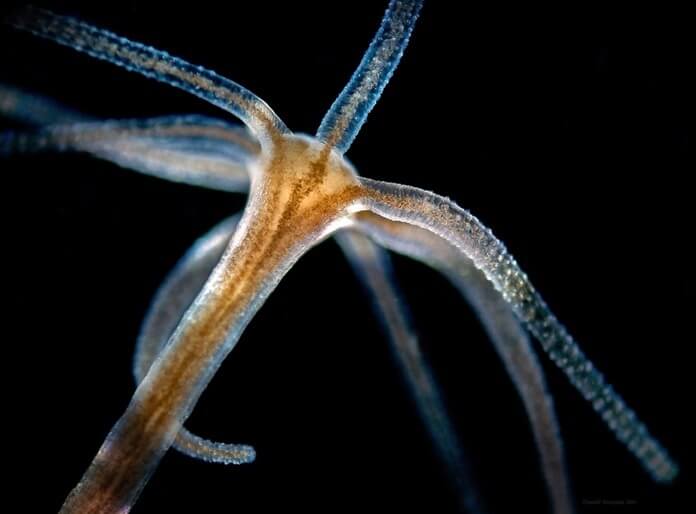
The miniature relatives of jellyfish, known as hydras, do not need eyes to live and even theoretically be considered immortal due to their amazing ability to regenerate.
Scientists were initially puzzled as to how this species could find its way to light without sight, but it was later discovered that hydras have a light-sensitive protein at the tips of their tentacles.
1. Eyeless, troglobite shrimp (Palaemonias ganteri)
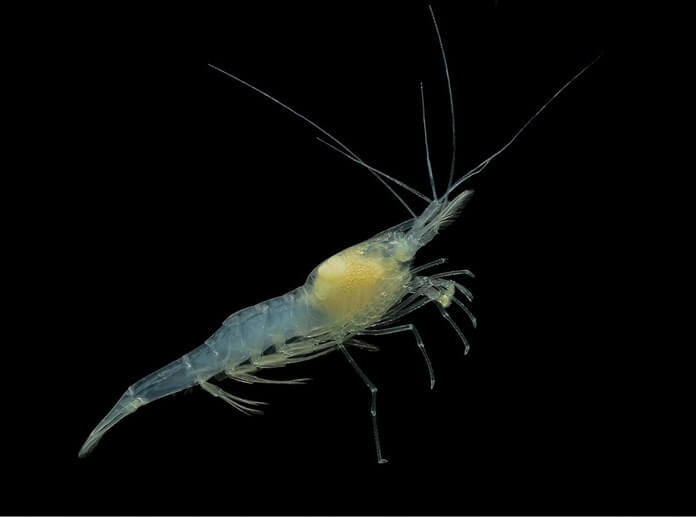
The top animals that do not need eyesight are headed by the shrimp, which chose to live in the caves of Kentucky. Since there is little light in such "apartments", the species Palaemonias ganteri evolved without eyes and with a shell devoid of pigment, which makes these creatures almost completely transparent.
Eyeless shrimp survive in a very unfriendly environment due to sediment that gets into the cave due to the movement of groundwater. In these sediments they find their meal - protozoa, mushrooms, algae and other organic materials.

